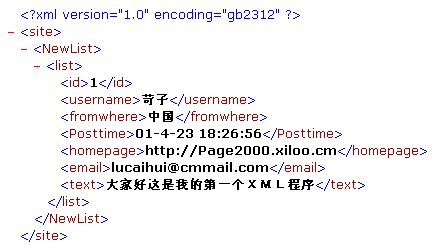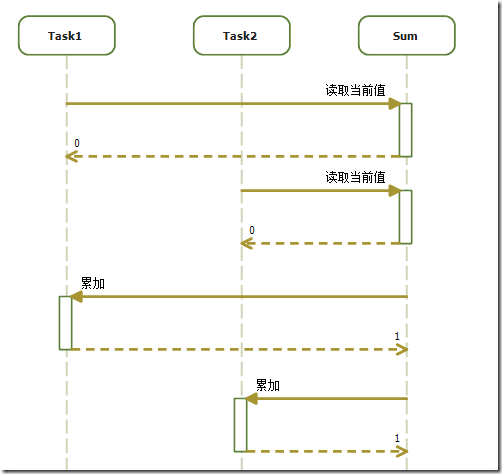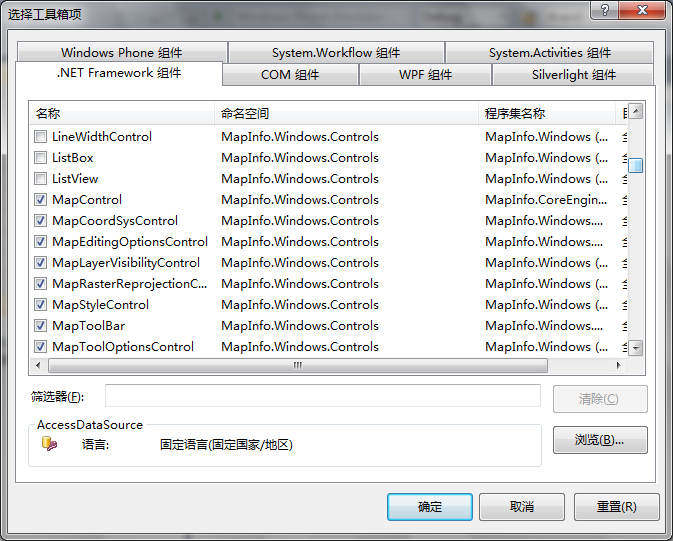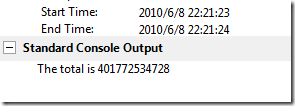当前位置:编程学习 > asp >>
答案:如果你还不知道什么是异步也不要紧,我们还是来看实例,通过实例来理解才是最深刻的。
在Remoting中,我们可以使用以下几种异步的方式:
1、普通异步
2、回调异步
3、单向异步
一个一个来说,首先我们这么修改我们的远程对象:public int ALongTimeMethod(int a,int b,int time)
{
Console.WriteLine("异步方法开始");
System.Threading.Thread.Sleep(time);
Console.WriteLine("异步方法结束");
return a+b;
}
这个方法传入2个参数,返回2个参数和表示方法执行成功,方法需要time毫秒的执行时间,这是一个长时间的方法。
如果方法我们通过异步远程调用,这里需要注意到这个方法输出的行是在服务器端输出的而不是客户端。因此,为了测试简单,我们还是在采用本地对象,在实现异步前我们先来看看同步的调用方法,为什么说这是一种阻塞?因为我们调用了方法主线程就在等待了,看看测试:DateTime dt=DateTime.Now;
RemoteObject.MyObject app=new RemoteObject.MyObject();
Console.WriteLine(app.ALongTimeMethod(1,2,1000));
Method();
Console.WriteLine("用了"+((TimeSpan)(DateTime.Now-dt)).TotalSeconds+"秒");
Console.ReadLine();
假设method方法是主线程的方法,需要3秒的时间:private static void Method()
{
Console.WriteLine("主线程方法开始");
System.Threading.Thread.Sleep(3000);
Console.WriteLine("主线程方法结束");
}
好了,现在开始运行程序:
用了4秒,说明在我们的方法开始以后本地就一直在等待了,总共用去的时间=本地方法+远程方法,对于长时间方法调用这显然不科学!我们需要改进:
1、普通异步:
首先在main方法前面加上委托,签名和返回类型和异步方法一致。private delegate int MyDelegate(int a,int b,int time);
main方法里面这么写:DateTime dt=DateTime.Now;
RemoteObject.MyObject app=new RemoteObject.MyObject();
MyDelegate md=new MyDelegate(app.ALongTimeMethod);
IAsyncResult Iar=md.BeginInvoke(1,2,1000,null,null);
Method();
if(
- 更多asp疑问解答:
- asp正则过滤重复字符串的代码
- 用asp过滤全部html但保留br类似的符号
- 会asp,但感觉asp要过点,想学php。但我一般做的都是小公司的站,用access数
- PHP的空间可以用ASP的源代码吗?
- 以前做asp程序,现在应该怎样发展?是学.net还是php
- 以前做asp程序,现在应该怎样发展?是学.net还是php
- 想做一个市级的人才网acess,sql数据库,语言asp,jsp,php分别用哪种好
- jsp,asp,php 区别
- 我想找一个有比较多漏洞的网站的源码,比如可以asp,php注入等都可以。供学习研究用。请提供下载地址。。
- 现在候找人做个网站,用ASP,还是PHP语言去做好
- asp,php ,jsp,.net 对于做网站前台的重要吗?
- asp和php的区别是什么?
- 我是新手SEO菜鸟 请问wp dw php asp cms myspl dede 这些软件应该如何区分呀?
- 网页制作相关的三种语言:ASP JSP PHP那个好点,简单点?
- 网页制作相关的三种语言:ASP JSP PHP那个好点,简单点?
CopyRight © 2022 站长资源库 编程知识问答 zzzyk.com All Rights Reserved
部分文章来自网络,
部分文章来自网络,






